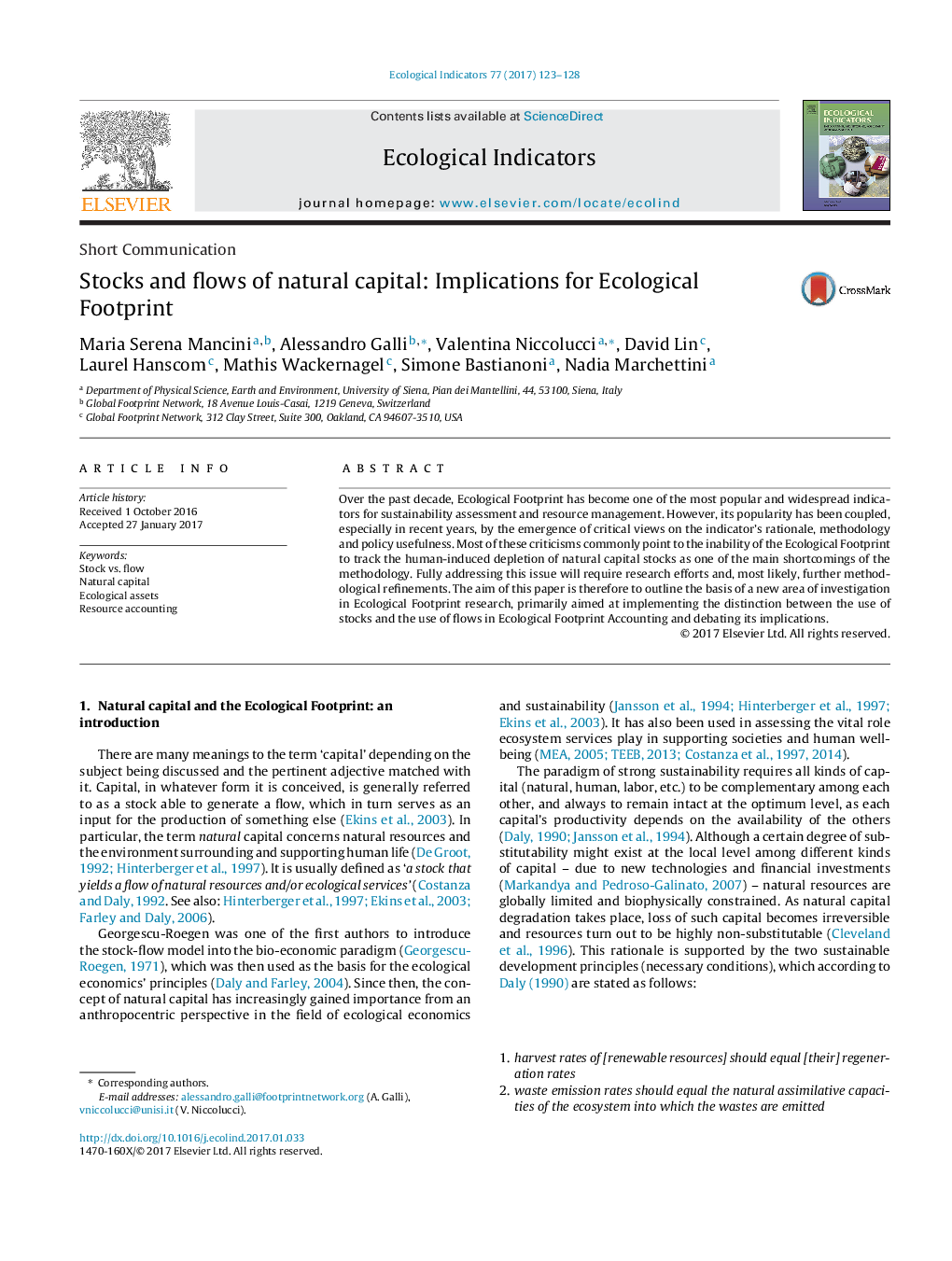| Article ID | Journal | Published Year | Pages | File Type |
|---|---|---|---|---|
| 5741716 | Ecological Indicators | 2017 | 6 Pages |
Abstract
Over the past decade, Ecological Footprint has become one of the most popular and widespread indicators for sustainability assessment and resource management. However, its popularity has been coupled, especially in recent years, by the emergence of critical views on the indicator's rationale, methodology and policy usefulness. Most of these criticisms commonly point to the inability of the Ecological Footprint to track the human-induced depletion of natural capital stocks as one of the main shortcomings of the methodology. Fully addressing this issue will require research efforts and, most likely, further methodological refinements. The aim of this paper is therefore to outline the basis of a new area of investigation in Ecological Footprint research, primarily aimed at implementing the distinction between the use of stocks and the use of flows in Ecological Footprint Accounting and debating its implications.
Keywords
Related Topics
Life Sciences
Agricultural and Biological Sciences
Ecology, Evolution, Behavior and Systematics
Authors
Maria Serena Mancini, Alessandro Galli, Valentina Niccolucci, David Lin, Laurel Hanscom, Mathis Wackernagel, Simone Bastianoni, Nadia Marchettini,
